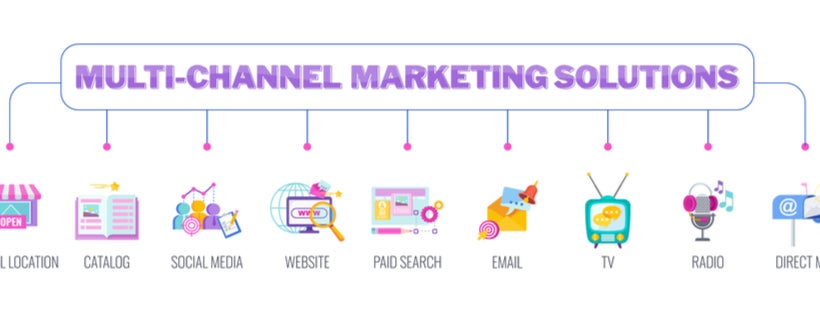With 2022 just around the corner, it’s the perfect time for small businesses to start planning for the months ahead and devise a robust business plan. However, operating in the era of COVID-19 requires you to take targeted steps to ensure long-term business continuity.
Read on to learn a few important tips to ensure the success of your small business in the upcoming year.
Prioritize a Multichannel strategy

In today’s modern era, customers expect service or product information to be readily available and they opt for shopping with companies that make the entire interaction convenient for them. Therefore, using a single channel strategy is quite impractical and insufficient. This makes it essential for brands to give customers what they want and adopt a multichannel marketing strategy.
Using various multi-channel marketing funnels helps you convince your audience to see your business as successful and making a steady mark. Furthermore, it also helps your brand grow by allowing you to be in contact with new leads, thus increasing your small business exposure and staying updated with the latest industry developments and trends.
The Benefits of A Multichannel Approach

By leveraging a multichannel strategy, you also allow your prospects to choose where, when, and how they want to connect or engage with you. These channels include, but are certainly not limited to, direct mail, emails, display adverts like vinyl banners, acrylic signs, custom table covers, hand sanitizer dispensers, etc., social media, and/or a retail storefront.
Creating such a strategy that ties together multiple media channels helps your brand realize various opportunities for more impactful messaging that is more mindful of the customer journey. A multichannel strategy increases customer retention and makes it easier to generate new business leads.
COVID-19 Considerations

Regardless of the size and nature of a business, the impact of the COVID-19 pandemic is being felt by almost every business around the world. Brands, therefore, need to constantly work towards navigating a broad range of connected issues, from revamping their operations, keeping their employees and customers safe, and navigating inventory delays.
Some of the COVID-19 considerations small businesses need to focus on include developing a robust communication plan. Prioritize speaking to clients, partners, investors, and other stakeholders to keep them updated on the latest business policies, any changes to operations, or innovative ways to serve or collaborate with them.
Apart from this, you also need a plan to adapt and reconfigure your business for various stages of this crisis. Offer new ways to shop like BOPIS or curbside delivery. Adjust your sales floor to cut down on germs. Floor decals and hand sanitizer dispensers can help.
Combat Inflation, Communicate Value

When it comes to small businesses, they’re generally in a weaker position to adjust their prices when inflation rises. On top of that, most of these businesses are already weakened by the prolonged recession and are hesitant to raise prices right now. However, with inflation going up rapidly, it’s time for you to become aggressive with a frequent small price increase to combat inflation and communicate value to your audience.
This is a far more feasible strategy than simply waiting for one big jump. Another way for small brands to stay ahead of inflation is to stock up on inventory before prices from the suppliers go up while also being careful not to jeopardize the cash reserves when buying ahead with an inventory.
E-Commerce Opportunities

While several industries and sectors have struggled during the pandemic, e-commerce has seen a highly successful period with massive growth and strengthening of online sales in the absence of open brick-and-mortar stores. For small business owners, the biggest benefit of having an online store is that it gives them an easy chance to connect with their customer base. This way, the customer range is not limited by how many people can be in a store at once based on local regulations.
Shoppers can have peace of mind shopping from the comfort and safety of their own homes. Make sure your social media and company website platforms have the same tone of voice customers are used to experiencing in store and your ecommerce business will be off to a great start.
Don’t Be Afraid to Pivot Your Business Model

To be profitable, you need to have a mindset where you’re not afraid to pivot your business model. Pivoting here simply means the process of experimenting with various ways to fulfill the vision of your business with the appropriate value proposition.
As a small business owner, you need to be willing to proactively make adjustments to your business model and/or product ideation with constant experimentation and testing until you get to the ‘right fit.’ Also, don’t fall for the myth that pivoting your business model symbolizes changing your company’s mission and vision entirely. Not all business pivots are massive; it could be as minor as changing your marketing or customer acquisition strategy.
Adjusting to the Post-Pandemic Workforce

The ongoing pandemic has generated new business trends, including the unprecedented shift to remote work and virtual interactions, deployment of automation, and enhanced use of e-commerce and social media platforms.
To effectively navigate the changes and adjust to the post-pandemic workforce, small businesses have to train their staff and reimagine their operations. For instance, how people work, what kind of skills they require to better serve customers, and the overall organizational culture required to help counter the lasting impact of COVID-19 on both the vulnerable workforce and overall business prospects.
Whatever the type of business you have, using the above tips can help you navigate the challenges better and see the desired success of your venture in the upcoming year.
























 Posted in
Posted in 












